1.5 Degrees of Global Warming—Are We There Yet?
Here’s where the world stands in its fight against climate change. The end goal remains the same.
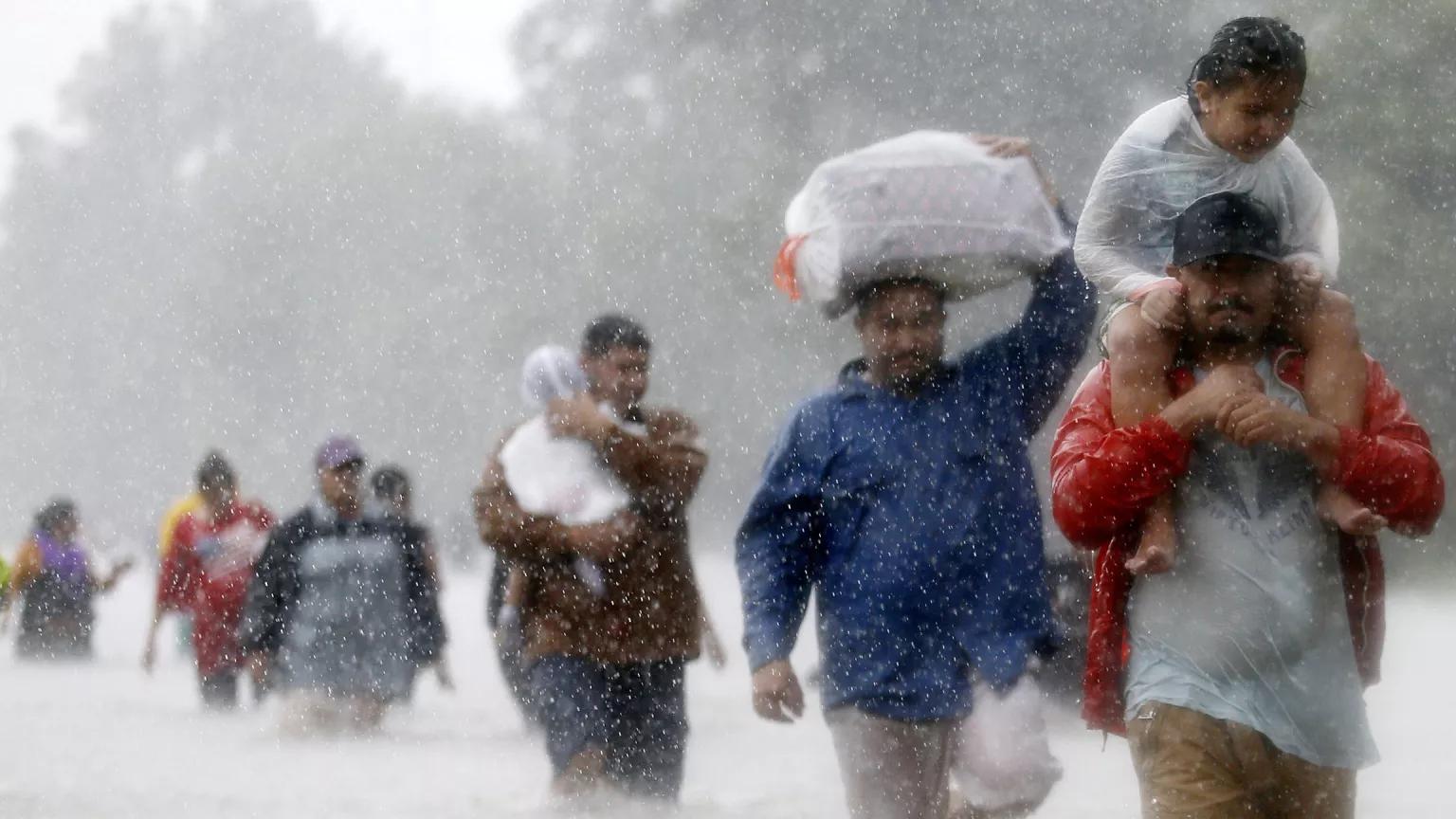
Tropical Storm Harvey caused heavy flooding in Texas in 2017.
Jonathan Bachman/Reuters
Earth hit a grim milestone earlier this year: The planet not only had its warmest January on record, but also, for the first time, its average temperature over 12 consecutive months was more than 1.5 degrees Celsius higher than preindustrial times. And each month since then, the streak has continued.
For years, limiting global temperature rise to 1.5 degrees by reducing global greenhouse gas emissions has been a rallying point for policymakers and environmental groups as a means to stave off some of the most devastating and long-lasting effects of the climate crisis. Today, the benchmark is often shorthand for what climate change “success” would look like.
So then, is this what failure looks like? Not exactly. First, El Niño weather patterns factor into this past year’s record-breaking heat, and second, how long the temperature exceeds 1.5 degrees is an important factor when assessing overall warming. Even so, we are still very much in danger of blowing past the 1.5 degree mark over the longer term. That’s deeply concerning, but all hope is not lost. Here’s what our proximity to this threshold means to scientists, policymakers, and all those fighting for their homes and lives on the frontlines of climate change.

Matthias Huss (right)—Swiss Federal Institute of Technology glaciologist and head of the Swiss measurement network Glamos—and an assistant prepare a camera at the Rhone glacier near Goms, Switzerland, June 2023.
Matthias Schrader/AP Photo
Where did the 1.5 degree climate goal come from?
Since climate change emerged as a global concern in the 1970s, scientists have been trying to predict the impacts of varying amounts of temperature rise. By 1990, when the United Nations’ International Panel on Climate Change (IPCC) published its first assessment, the authors defined the increase of global average temperatures by 2 degrees Celsius (compared to that between 1850 and 1900) as “an upper limit beyond which the risks of grave damage to ecosystems, and of nonlinear responses, are expected to increase rapidly.”
Those “nonlinear responses” refer to the triggering of irreversible tipping points—such as rapid glacier melt, collapsing coral reefs, and thawing permafrost. Once past a certain threshold, such events build upon themselves, exponentially exacerbating the effects of climate change. In short, hitting a tipping point should be avoided at all costs, as it would bring devastating losses to ecosystems, societies, and human lives.
It’s important to note, however, that even before reaching tipping point status, climate change causes massive amounts of damage. Acknowledging this fact in the late aughts, many small island nations and other countries on the climate frontlines banded together to demand “1.5 to stay alive.” At the 2009 climate talks in Copenhagen, Archbishop Desmond Tutu said, "A global goal of about 2 degrees Celsius is to condemn Africa to incineration," while Sudanese diplomat Lumumba Di-Aping, then chairman of G-77, a group of now 134 low-income nations, called it “a suicide pact.”
After much deliberation, the Paris Agreement of 2015 codified the 1.5 degree goal for the first time in international climate policy. In its text, 196 countries pledged to cut their carbon emissions in order to limit global average temperature rise to “well below” 2 degrees while they pursue efforts to limit it to 1.5 degrees.

Pacific Island countries, like Tuvalu shown here, are threatened by sea level rise caused by climate change.
Ashley Cooper/Getty
What does 1.5 degrees of warming look like?
Examples of extreme weather fueled by climate change abound. In the past year alone, a deadly wildfire devastated a historic community in Hawaii, floods killed more than 5,000 people in Libya, and a heat wave kept many Indian voters from the polls. The climate crisis is very much already here, but it’s certainly not a zero-sum game—every bit of warming prevented is worth the effort.
The IPCC released a special report in 2018 that compared the potential consequences between the warming of the climate by 1.5 degrees versus 2 degrees. Preventing that extra half degree, the report found, could save up to 420 million people from frequent exposures to extreme heat waves and up to 10.4 million from the impacts of sea level rise. It could also significantly lower the probability of sea ice–free summers in the Arctic, prevent about 700,000 square miles of permafrost from thawing, and reduce crop failures in critical agricultural areas of sub-Saharan Africa, Southeast Asia, and Central and South America.
At 1.5 degrees of warming, the IPCC predicts that higher ocean temperatures would drive some marine species toward higher latitudes where they could potentially survive but which could then cause major disruptions in existing ecosystems. And, of course, not all species can simply move away. For instance, between 70 and 90 percent of tropical coral reefs would likely die, imperiling the $11 trillion in ecosystem services they currently provide annually in the form of fisheries, tourism, coastal protection, and more. Climate projections also have both heavy rains and droughts growing in frequency and intensity, along with increasing poverty levels.
And that half degree of warming would not look the same everywhere. Over the past 40 years, the Arctic has been heating up about four times faster than the rest of the world, and Europe appears to be the fastest-warming continent. The effects of climate change are not uniform, but what happens in one place can have cascading effects elsewhere. The melting of polar ice sheets, for instance, affects sea level rise elsewhere. Rising seas are already destroying the coastlines and freshwater supplies of many low-lying small island nations in the Pacific Ocean, some of which could soon become uninhabitable or even disappear completely under the waves.
There’s no doubt that climate change is taking a heavier toll on low-income countries, particularly in the Global South, but wealthier countries, many of which are responsible for inordinate amounts of historic carbon emissions, are also face-to-face with the climate emergency. Over the past 10 years or so, wildfires in the western United States have not only destroyed homes and lives but also halted or reversed decades-long improvements in air quality. When record-breaking wildfires raged in Canada last summer, toxic smoke engulfed major cities on the East Coast, including New York City and Washington, D.C., which had rarely experienced this particular type of air pollution. Intensifying wildfires, droughts, floods, hurricanes, storm surges, algal blooms, invasive species, vector-borne diseases, crop failure, economic hardship—suffice to say, we’ve already gotten a real taste of what 1.5 degrees of warming would feel like.
Have we hit 1.5 degrees of warming already?
Yes and no—it’s complicated. Climate scientists agree that the planet has already warmed at least 1.1 degrees Celsius. There is debate, however, about how to best gauge global temperature rise.
Because temperatures naturally fluctuate year to year, the IPCC doesn’t just look at the most recent data to make its assessment. Instead, it calculates average temperatures over the past 20 years. While this method ensures a better scientific picture of climate patterns over time, the world doesn’t have the luxury of waiting an extra decade or two to run the numbers before taking preventative action.
Some climate scientists therefore suggest a new approach, one that would look at temperatures over just the past 10 years plus the projected temperatures for the next decade, and then take an average. This would allow policymakers to more quickly assess whether their current emissions-fighting efforts are up to snuff.
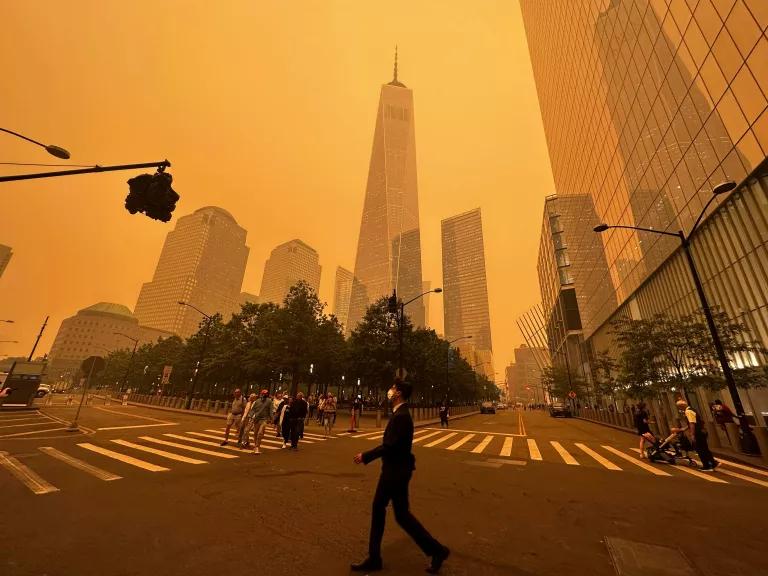
In June 2023, heavy wildfires in Canada caused smoke to blanket the air in the United States, including in New York City.
Julie Jacobson/AP Photo
How much warming are we currently on track for?
Back in 2012, a World Bank study suggested that the atmosphere was on a path to a whopping 4 degrees of warming—needless to say, a scenario that would have devastating consequences for all of humanity. Last year, a little over a decade later, the U.N. Environment Programme estimated that updated national climate commitments have put us on track for 2 to 3 degrees of warming. While this would be a vast improvement over 4 degrees, it’s still sorely outside the range of the Paris Agreement goals. In addition, the U.N. calculation is based on the assumption that all of the countries would fulfill their commitments—perhaps a bit optimistic, given that there are no penalties within the Paris Agreement for countries that fall short of their pledges.
We must also consider the unprecedented nature of the climate crisis, which means there is still a lot that scientists just don’t know. Spikes in land and sea temperatures in 2023 greatly exceeded predictions by climate models, revealing the gaps that remain in our overall understanding of how rising temperatures could affect the complicated systems and feedback loops that govern life as we know it on this planet.
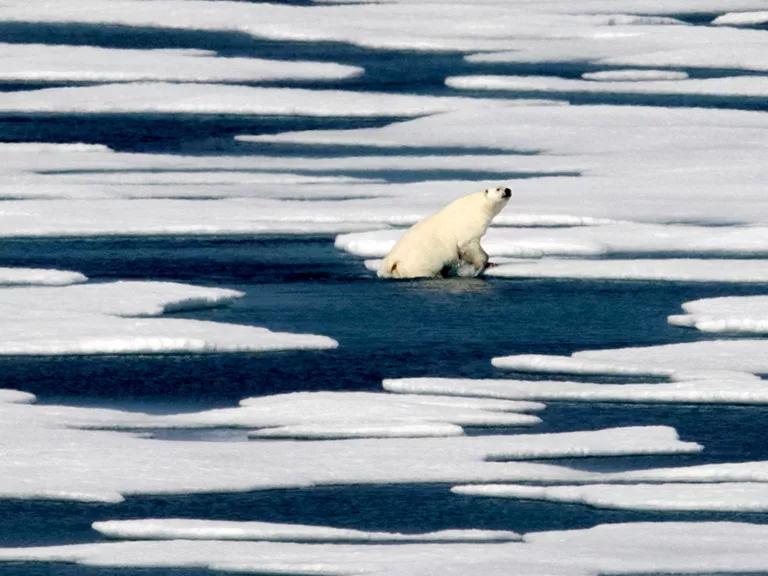
Climate scientists point to the Arctic—which has warmed twice as fast as the rest of the world since 1988—as the place where climate change is most noticeable with dramatic sea ice loss, a melting Greenland ice sheet, receding glaciers, and thawing permafrost.
David Goldman/AP Photo
What now?
Some climate analysts foresee a scenario where we could allow warming to overshoot the 1.5 degree limit for a few decades and then bring temperatures back down by the end of the century. But for Dr. Laurie Geller, an atmospheric scientist from NRDC's science office, this would be quite a gamble.
“The overshoot strategy requires not only drastic cuts in emissions, but also wide-scale implementation of carbon-capture technologies that are currently in a very early state of development,” she says. “It might even require some deployment of highly controversial geoengineering strategies to force global cooling effects.” (This includes strategies to inject particles in the upper atmosphere that reflect sunlight or to add reflective cloud cover in the lower atmosphere, ideas examined by the National Academies of Sciences, Engineering, and Medicine.) But all of these tactics are far more risky and complex than the climate solutions we already have at our fingertips, she cautions. “We can’t yet say whether any of these paths are technically, economically, or politically feasible.”
Moreover, while the IPCC acknowledges that carbon-removal technologies may likely have an important role to play in removing past emissions from the atmosphere, doing so wouldn’t suddenly erase the impacts already present—especially if tipping points have been breached. Climate change is not something you can simply rewind.
What we do know is that hitting 1.5 degrees of warming isn’t like flipping a switch to climate chaos. Every tenth or hundredth of a degree of warming that we prevent will make a difference—saving countless lives, keeping vital ecosystems functioning, preventing extinctions, and ensuring our ability to grow the food we need. For many frontline communities, each small increment of warming avoided could mean the difference between a lifetime of displacement or the ability to adapt, keep cultural traditions alive, and remain in homelands and communities.
While temperature targets are important in gauging our success (or lack thereof), the debate over which degree is safest or most feasible should not distract countries, companies, and other polluters from doing everything they can to cut their carbon pollution as quickly as possible. Climate adaptation strategies will also be pivotal in our ability to cope with the changes to come.
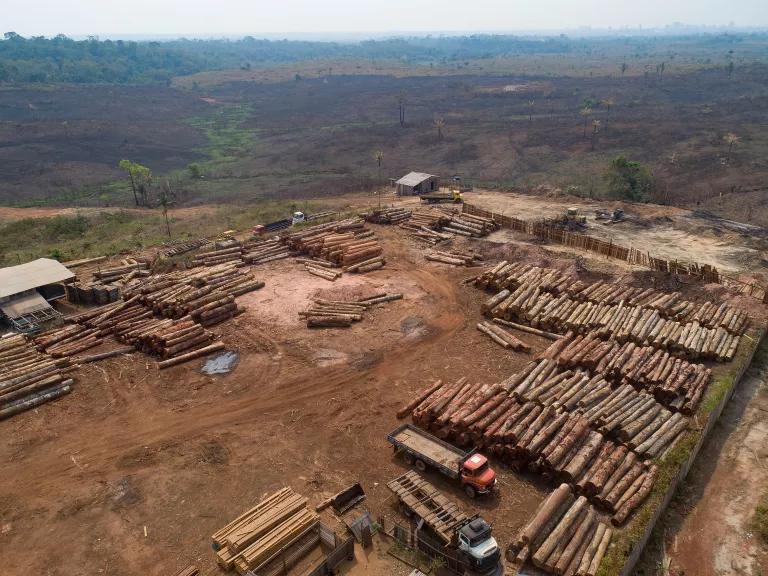
Forests help absorb carbon, which gets released into the atmosphere when deforestation takes place, as seen here in Porto Velho, Brazil, in 2019.
Andre Penner/AP Photo
For the long-term 1.5 degree goal to possibly stay within reach, countries need to cut emissions dramatically by 2030 to put us on track for reaching net zero emissions around 2050. The good news is, we already know what to do to get there. We must rapidly shift energy grids to run on clean power and retrofit buildings to use less energy. We must reduce deforestation and restore ecosystems that help absorb carbon as well as buffer storms. We must cut methane emissions from agriculture and landfills. At the same time, we must prepare for the shifting weather patterns we know are coming to minimize the harm they will cause. And we must take care of the millions of people who will take the brunt of extreme weather, sea level rise, political instability, and the climate anxiety and grief that follow.
Would the world be better off if we had rapidly cut our climate pollution years ago, or last month, or yesterday? Absolutely, but taking stronger action today is the best—and really, only—option we’ve got.
This NRDC.org story is available for online republication by news media outlets or nonprofits under these conditions: The writer(s) must be credited with a byline; you must note prominently that the story was originally published by NRDC.org and link to the original; the story cannot be edited (beyond simple things such as grammar); you can’t resell the story in any form or grant republishing rights to other outlets; you can’t republish our material wholesale or automatically—you need to select stories individually; you can’t republish the photos or graphics on our site without specific permission; you should drop us a note to let us know when you’ve used one of our stories.
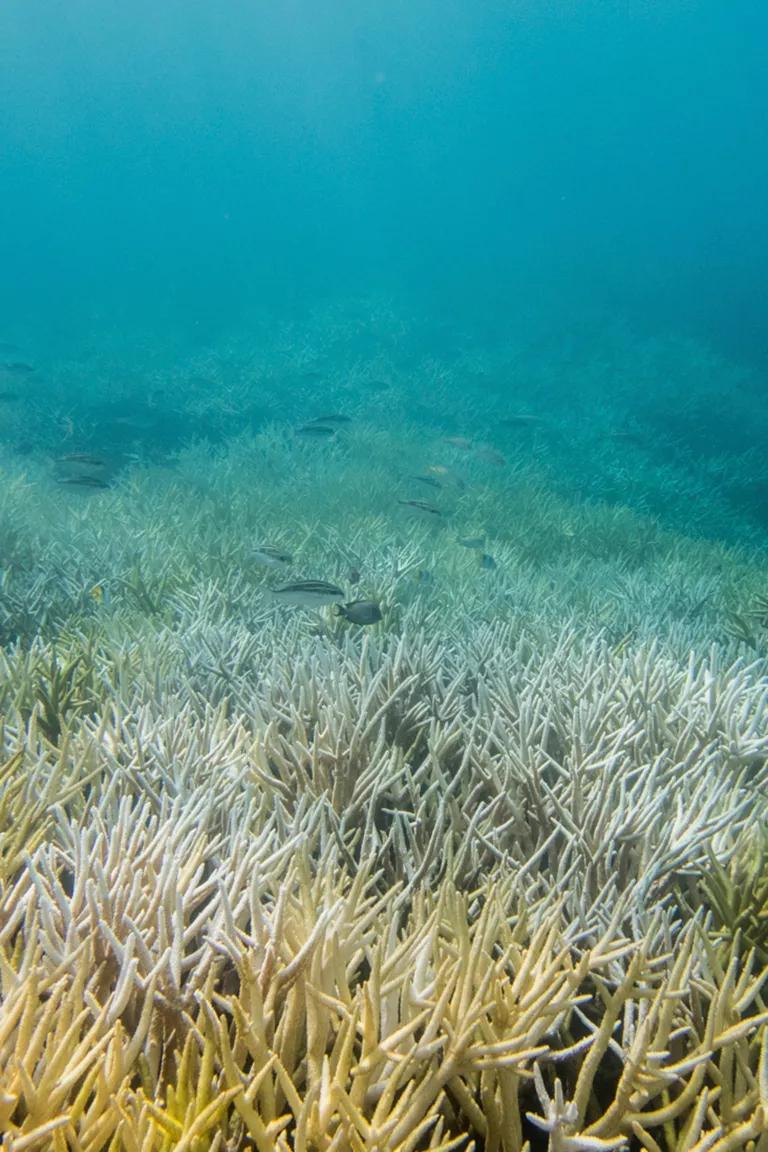
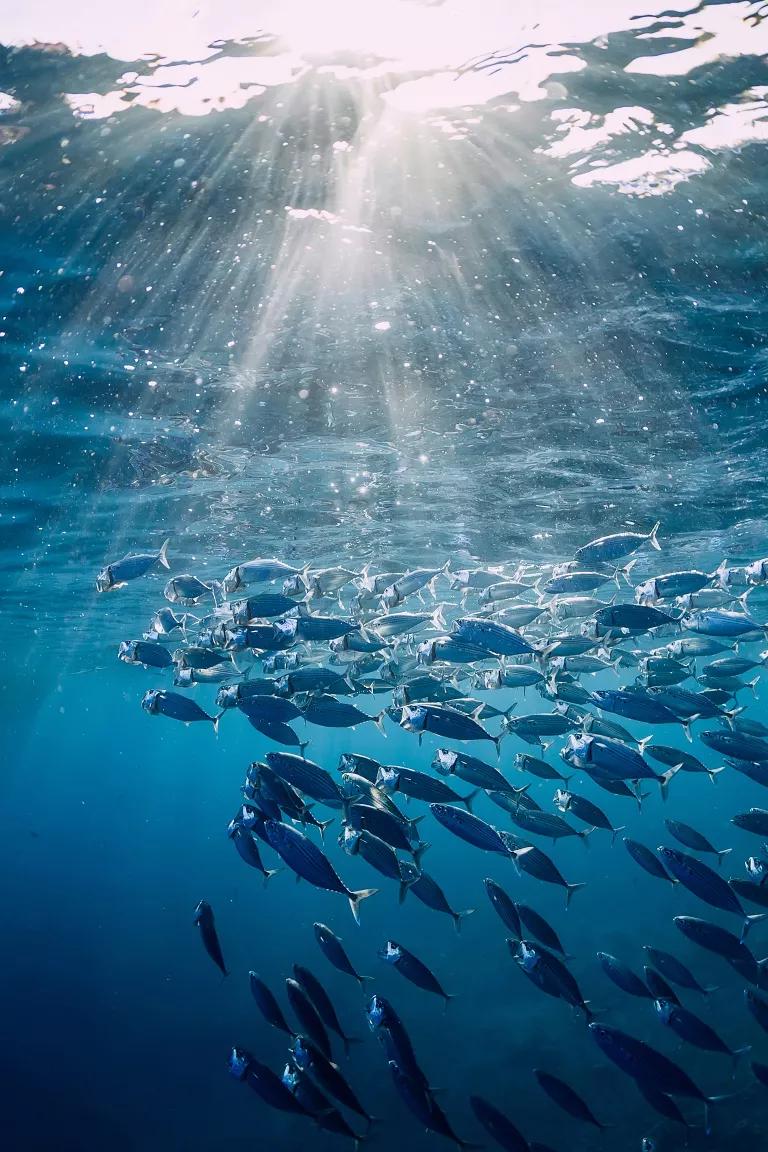
Will Shifting to Reusable Straws Really Make a Difference?
When Customers and Investors Demand Corporate Sustainability
Australia Is Burning. Jakarta Is Drowning. Welcome to 2020.
Will Shifting to Reusable Straws Really Make a Difference?
When Customers and Investors Demand Corporate Sustainability
Australia Is Burning. Jakarta Is Drowning. Welcome to 2020.
Will Shifting to Reusable Straws Really Make a Difference?
When Customers and Investors Demand Corporate Sustainability
Australia Is Burning. Jakarta Is Drowning. Welcome to 2020.
Will Shifting to Reusable Straws Really Make a Difference?
When Customers and Investors Demand Corporate Sustainability